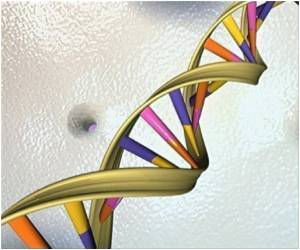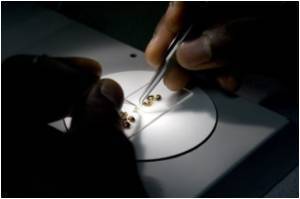
"We're using this technique and synthetic organic chemistry to be able to see a damage site as it flies through the nanopore," says Henry White, distinguished professor and chair of chemistry at the University of Utah and senior coauthor of the new study.
Strands of DNA are made of "nucleotide bases" known as A, T, G and C. Some stretches of DNA strands are genes.
The new method looks for places where a base is missing, known as an "abasic site," one of the most frequent forms of damage in the 3-billion-base human genome or genetic blueprint. This kind of DNA damage happens 18,000 times a day in a typical cell as we are exposed to everything from sunlight to car exhaust. Most of the damage is repaired, but sometimes it leads to a gene mutation and ultimately disease.
By combining nanopore damage-detection with other chemical ways of altering DNA, the researchers hope to make this new technique capable of detecting other kinds of DNA damage by converting the damage to a missing base, says the study's other senior coauthor, Cynthia Burrows, a distinguished professor of chemistry at the University of Utah.
She adds: "Damage to the bases of DNA contributes to many age-related diseases, including melanoma; lung, colon and breast cancers; Huntington's disease; and atherosclerosis."
Advertisement
Source-Eurekalert












